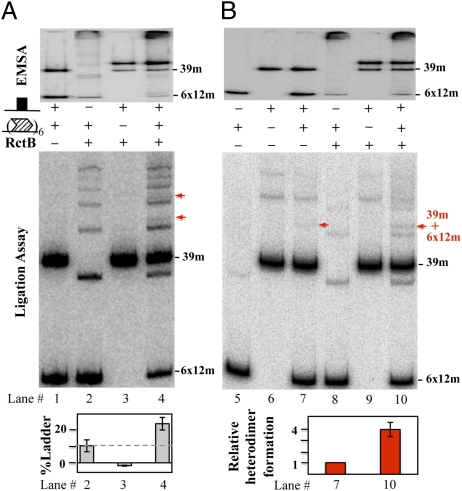Fig. 5.
Effect of the 39-mer on handcuffing of origin iterons (6 × 12-mer) when the sites are in trans. (A) The 39-mer and 6 × 12-mer–containing fragments were used both at 0.03 nM and RctB at 7 nM. The fragments were excised from plasmids pTVC151 and pTVC228, which flanked the 39-mer with 300 bp and the 6 × 12-mer with 100 bp of vector DNA on both sides. The red arrows show the heteroligation products between the 6 × 12-mer and the 39-mer (lane 4). A 5% PAGE was used for both EMSA and the ligation assay. Percent ladder was estimated as in Fig. 4. (B) Same as A except that ladder formation by the 6 × 12-mer fragments was reduced by using twofold less DNA. The plot shows the intensity of the heteroligation product (red arrows) in lanes 7 and 10 (without and with RctB, respectively). The error bars representing one SD were derived from three different experiments.

